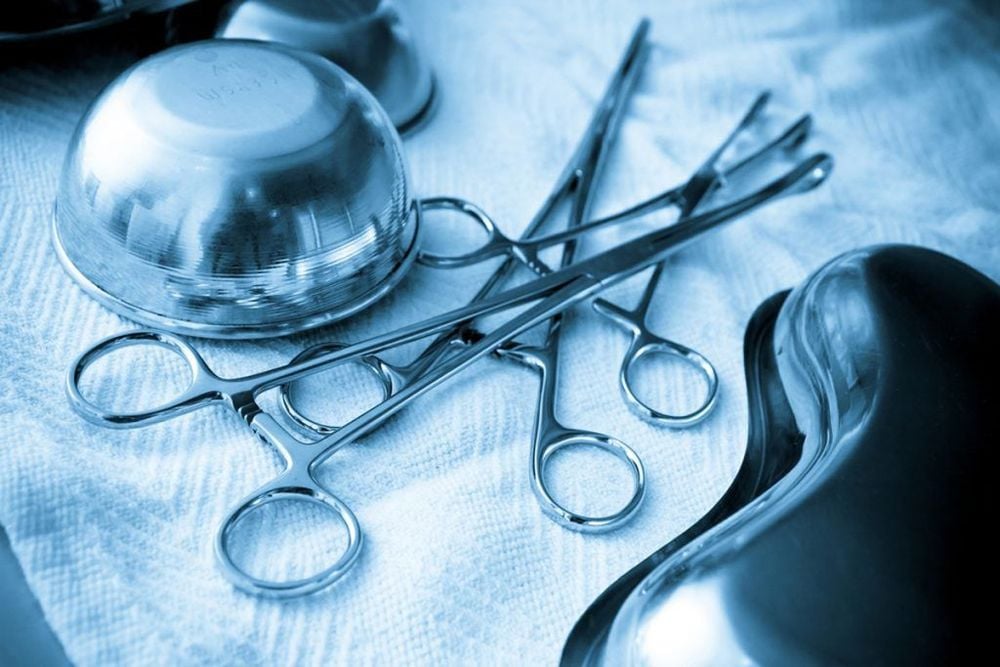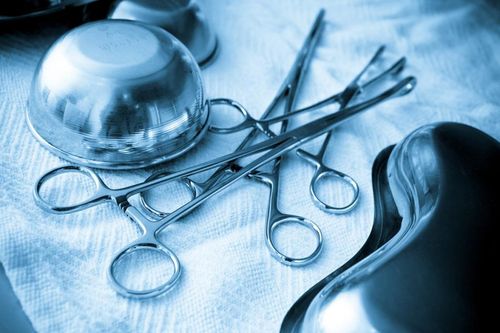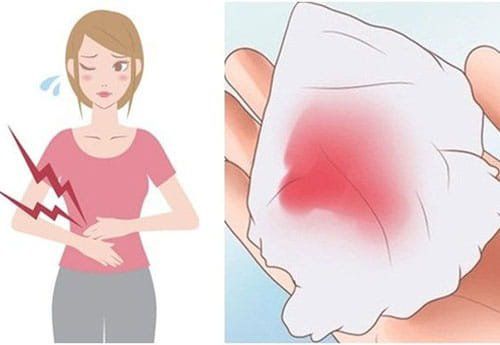This is an automatically translated article.
The article is professionally consulted by Master, Doctor Tran Lam Khoa - Department of Obstetrics and Gynecology - Vinmec Central Park International General Hospital.Whatever abortion method you choose, there are complications and health risks. But those risks will be somewhat reduced if the number of breaks is limited and performed at a reputable medical facility.
1. Is abortion dangerous?
Abortion is a direct impact on the uterine cavity, there are many risks of bleeding, infection, inflammation of the appendages, some cases of uterine perforation or uterine adhesions, can affect health and future fertility.
According to the advice of obstetricians and gynecologists, only when in a situation of unwillingness to keep the pregnancy, should the pregnancy be terminated because it will leave serious consequences such as retained placenta, bleeding, infection bacteria, uterine perforation, uterine adhesions, infertility...
If you have an abortion in adolescence, the degree of disease and complications later on is much more severe.
Trắc nghiệm: Bạn đã biết cách tránh thai an toàn chưa?
Có rất nhiều biện pháp tránh thai an toàn nhưng không phải ai cũng biết được điều đó. Trả lời đúng những câu hỏi trắc nghiệm dưới đây chứng tỏ bạn có kiến thức tốt về các biện pháp ngừa thai an toàn.2. Methods of abortion
2.1. Medical Abortion Medical abortion is the use of medication to end a pregnancy. This is a multi-step process involving 2 drugs and or multiple doses of a drug. When taking 2 drugs, they are more effective and have fewer side effects than 1 drug. This method is convenient, private, and less invasive. However, if the method fails, a surgical abortion is required.
This method applies to gestational ages from the time the pregnancy is detected in the uterus to the end of 22 weeks of amenorrhea. Depending on the gestational age, the time from home to the medical facility, there will be different regimens such as drug dosage, route of administration and monitoring method (monitoring at home, at the clinic or hospitalized for monitoring). .
2.2. Surgical Abortion A surgical abortion is the use of procedures that insert an instrument through the cervix to remove the pregnancy, including vacuum aspiration and dilation.
Depending on gestational age, there will be different procedures as follows:
Gestational age from 6 to 12 weeks of amenorrhea: Using manual vacuum aspiration (MVA) or machine (EVA). Gestational age over 12 weeks to the end of 18 weeks: Use dilatation - grabbing (D&E).

Phá thai ngoại khoa là dùng các thủ thuật đưa dụng cụ qua cổ tử cung để chấm dứt thai kỳ
3. Complications of abortion method
3.1. Complications of medical abortion
Abdominal pain, bleeding: Patients can take pain relievers, if the pain increases, they need to go to a qualified medical facility. If bleeding is soaked with 2 thick tampons within 1 hour lasting 2 hours in a row, you need to go to a medical facility immediately, if necessary, have a blood transfusion. Fever, Nausea and Vomiting: Can be used to reduce fever and symptoms of nausea and vomiting can be taken with antiemetics, but usually resolve on their own. Diarrhea: Anti-diarrheal medications and rehydration drinks can be used to prevent excessive dehydration. Infection: If suspected, immediate follow-up, if confirmed, antibiotics should be given and hospitalization for hysterectomy if necessary. Risks in the next pregnancy such as: vaginal bleeding in early pregnancy; miscarriage, premature birth; babies born underweight; severe infection.3.2. Complications of surgical abortion Usually life-threatening complications are rare after a safe abortion, but complications can occur even when the procedure is done correctly. and professional. Therefore, when abortions are performed in unsafe settings or by people performing the procedure, complications are much more common.
Technical complications
Genital tract infections: When performing the procedure, even though the instruments have been sterilized and done carefully, the bleeding process still creates conditions for bacteria to enter. Mild cases cause endometritis, severe cases lead to uterine adhesions and lead to infertility, even death. Hemorrhage: The manipulations of curettage, if not performed properly, can cause the cervix to tear, perforate, and rupture the uterus. If not treated promptly and appropriately, it can cause shock and loss of blood, which is life-threatening. Missing placenta and fetus: One of the common complications is a missing placenta or a part of the fetus. Depending on the severity, there may be different treatment methods such as sucking on the medicine, or suctioning the uterus. Anesthesia reactions: In large abortions and abortions, the patient will be anesthetized and at risk of having an anesthetic reaction, affecting nerves, causing shock or even life-threatening.

Viêm nhiễm đường sinh dục có thể xảy ra nếu phá thai không an toàn
Hormonal and psychological complications
Menstrual irregularity. Decreased sensation during sex. Neurasthenia. Dizziness, fatigue, insomnia. Blocked fallopian tubes, leading to ectopic pregnancy, infertility. Other complications
Adhesions to the uterus, pelvic inflammatory disease: When curettage or suction, the uterine wall muscle is damaged, the front and back walls of the uterus stick together, causing symptoms of abdominal pain, stopping menstruation. ... Pain due to uterine contraction: The uterus shrinks after curettage, suction often leads to abdominal pain. Endometriosis: When curettage, aspiration, due to uterine contraction or suction pressure causing blood to flow into the abdomen, there will be a little endometrium and cultured in the abdominal cavity, forming cause endometriosis. This leads to abdominal pain, secondary infertility, menstrual disorders, and pain during intercourse. There are many reasons why pregnant women have to abort a pregnancy such as: poor reproductive health, fetal malformations, ectopic pregnancy, unintended pregnancy, etc., but in order to limit the effects on health, it is advisable to practice perform abortion method at a reputable specialized medical facility with modern medical equipment and a team of good specialist doctors.
At the same time, you should visit your health regularly, plan well if you want to get pregnant and choose an appropriate and effective method of contraception if you do not want to get pregnant.













